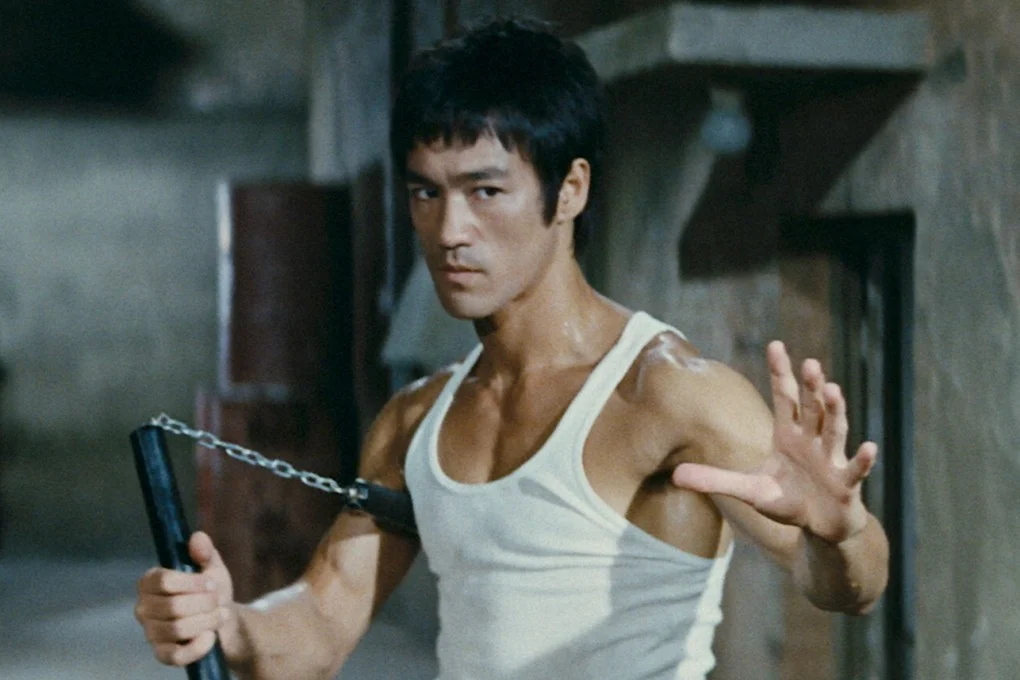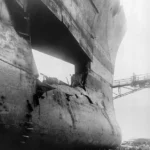Bruce Lee revolutionized martial arts and became a global cultural phenomenon. His lightning-fast moves and philosophical approach to combat captivated audiences worldwide.
Lee’s impact extended far beyond martial arts, breaking barriers for Asian actors in Hollywood and inspiring millions with his dedication and skill. He starred in iconic films like “Enter the Dragon” and developed his own fighting style, Jeet Kune Do.
Though his life was tragically cut short at age 32, Bruce Lee’s legacy continues to influence martial artists, fitness enthusiasts, and pop culture nearly five decades after his death. His journey from Hong Kong to international stardom remains a testament to his talent and perseverance.
Early Life and Background
Bruce Lee’s early years were shaped by his experiences in Hong Kong and the United States. These formative periods laid the foundation for his future as a martial arts legend and cultural icon.
Childhood in Hong Kong
Bruce Lee was born on November 27, 1940, in San Francisco, California, while his parents were on tour with the Chinese Opera. His father, Lee Hoi-chuen, was a Cantonese opera star. The family returned to Hong Kong when Bruce was just three months old.
Growing up in Kowloon, Lee was exposed to the entertainment industry from a young age. He appeared in several films as a child actor, showcasing his natural charisma and screen presence.
Lee’s interest in martial arts began at the age of 13 when he started learning Wing Chun kung fu under the renowned master Yip Man. This training would profoundly influence his future career and philosophy.
Emigration to the United States
In 1959, at the age of 18, Lee moved to the United States. He initially lived with family friends in San Francisco before relocating to Seattle to complete his high school education.
Lee enrolled at the University of Washington, studying philosophy while supporting himself by teaching martial arts. He opened his first kung fu school in Seattle, introducing many Americans to Chinese martial arts.
During this time, Lee began developing his own martial arts style, which would later become Jeet Kune Do. He also met Linda Emery, his future wife, while teaching kung fu classes at the university.
Lee’s move to the United States marked a turning point in his life, setting the stage for his future success in martial arts and entertainment.
Martial Arts Philosophy and Development
Bruce Lee revolutionized martial arts through his unique philosophy and innovative training methods. He blended Eastern and Western concepts to create a highly effective and adaptable approach to combat and self-expression.
Jeet Kune Do Foundation
Jeet Kune Do, meaning “Way of the Intercepting Fist,” formed the core of Bruce Lee’s martial arts philosophy. Lee developed this style to emphasize practicality, flexibility, and efficiency in combat.
He rejected the rigid structures of traditional martial arts, believing they limited personal growth and combat effectiveness. Instead, Lee advocated for a fluid, adaptable approach that could respond to any situation.
Jeet Kune Do emphasized direct, economical movements and the cultivation of speed, timing, and distance control. Lee incorporated techniques from various martial arts, including Wing Chun kung fu, boxing, and fencing.
Influences and Evolution
Lee’s martial arts philosophy drew inspiration from diverse sources, both Eastern and Western. He studied philosophy at the University of Washington, which heavily influenced his approach to martial arts and life.
Lee integrated concepts from Taoism, Buddhism, and Western philosophy into his martial arts practice. He emphasized the importance of self-discovery and personal expression through movement.
As Lee’s philosophy evolved, he placed greater emphasis on the mental and spiritual aspects of martial arts. He believed that true mastery required cultivating the mind as well as the body.
Lee’s training methods incorporated weight training, nutrition, and flexibility exercises, which were revolutionary for martial arts at the time. He constantly refined his techniques and ideas, adapting them based on real-world experience and scientific principles.
Film Career
Bruce Lee’s film career catapulted him to global stardom and cemented his status as a cultural icon. His on-screen charisma and martial arts prowess captivated audiences worldwide.
Breakthrough and Rise to Fame
Lee’s acting career began in childhood, appearing in over 20 Hong Kong films. His breakout role came in 1966 with “The Green Hornet” TV series, where he played Kato. This exposure in the U.S. led to guest appearances on popular shows like “Longstreet.”
In 1971, Lee starred in “The Big Boss,” which became a box office hit in Asia. The film’s success paved the way for his next project, “Fist of Fury” (1972). These movies showcased Lee’s unique fighting style and philosophical approach to martial arts.
Hollywood and Hong Kong Collaborations
Lee’s Hollywood debut came with “Enter the Dragon” (1973), a joint U.S.-Hong Kong production. The film blended Eastern and Western elements, appealing to a global audience. It grossed over $200 million worldwide, equivalent to over $1 billion today.
“Way of the Dragon” (1972) saw Lee take on multiple roles as writer, director, and star. The film’s climactic fight scene with Chuck Norris in the Roman Colosseum became legendary.
Lee’s final completed film, “Game of Death,” began production in 1972 but was left unfinished due to his untimely death in 1973.
Posthumous Releases
“Game of Death” was eventually completed and released in 1978, using body doubles and archived footage of Lee. The iconic yellow tracksuit worn by Lee in the film became a pop culture symbol.
“Tower of Death” (1981) incorporated unused footage of Lee from “Game of Death.” While these posthumous releases received mixed reviews, they helped maintain Lee’s cinematic legacy.
Lee’s influence extended beyond his lifetime. His films inspired countless martial arts movies and action choreography in Hollywood. Documentaries and biopics continue to explore his life and impact on cinema and martial arts.
Cultural Impact
Bruce Lee’s influence extended far beyond martial arts, reshaping popular culture and challenging racial stereotypes in media. His philosophy and teachings continue to inspire millions worldwide.
Influence on Martial Arts
Lee revolutionized martial arts training and philosophy. He developed Jeet Kune Do, a hybrid martial arts system emphasizing practicality and efficiency. This approach challenged traditional styles and encouraged fighters to adapt techniques to their individual strengths.
Lee’s emphasis on physical fitness and cross-training influenced modern mixed martial arts. He introduced weight training and nutrition to martial arts regimens, practices now standard in combat sports.
His teachings on mindfulness and self-expression in martial arts inspired practitioners to view combat as a form of personal growth and self-discovery.
Legacy in Popular Media
Lee’s films redefined action cinema, showcasing martial arts as a dynamic and artistic form of expression. His on-screen charisma and physical prowess set new standards for action stars.
He broke barriers for Asian actors in Hollywood, paving the way for greater representation. Lee’s portrayal of strong, complex Asian characters challenged prevalent stereotypes in Western media.
His image and philosophy have been referenced in countless movies, TV shows, and video games. Lee’s iconic yellow jumpsuit from “Game of Death” has become a pop culture symbol, often homaged or parodied in various media.
Lee’s quotes and teachings frequently appear in self-help books and motivational content, cementing his status as a cultural icon beyond martial arts.
Personal Life
Bruce Lee’s personal life was characterized by his dedication to family and his rigorous approach to physical fitness. He balanced his martial arts career with his roles as a husband and father, while maintaining an intense training regimen.
Family and Relationships
Bruce Lee married Linda Emery in 1964. They had two children together: Brandon, born in 1965, and Shannon, born in 1969. Lee was a devoted family man who prioritized spending time with his wife and kids despite his busy career.
His marriage to Linda was interracial, which was uncommon at the time. They faced some societal challenges but remained committed to each other throughout Lee’s life.
Lee’s son Brandon followed in his footsteps, becoming an actor and martial artist before his tragic death in 1993. His daughter Shannon has worked to preserve her father’s legacy through various projects and foundations.
Physical Fitness and Nutrition
Lee’s approach to fitness was revolutionary for his time. He developed a training philosophy that combined elements from various martial arts and Western physical fitness methods.
His workout routine included:
- Weight training
- Running
- Cycling
- Jump rope
Lee paid close attention to his diet, emphasizing:
- High protein intake
- Complex carbohydrates
- Plenty of fruits and vegetables
He experimented with protein drinks and supplements to enhance his performance. Lee avoided empty calories and refined foods, preferring whole, nutrient-dense options.
Lee’s dedication to fitness extended beyond personal practice. He wrote extensively about his methods and philosophy, influencing generations of martial artists and fitness enthusiasts.
Death and Investigation
Bruce Lee’s sudden passing at age 32 shocked the world and sparked intense scrutiny. Questions arose about the circumstances surrounding his death, leading to multiple investigations over the years.
Initial Reports
On July 20, 1973, Bruce Lee collapsed while dubbing dialogue for “Enter the Dragon” in Hong Kong. He was rushed to Queen Elizabeth Hospital but was pronounced dead on arrival. The initial cause of death was reported as cerebral edema.
Lee had complained of a headache earlier that day and taken a painkiller containing aspirin and meprobamate. An autopsy revealed swelling in his brain, which doctors attributed to an allergic reaction to the medication.
The Hong Kong government ruled Lee’s death “death by misadventure,” a classification used when a fatality occurs due to a risk taken voluntarily.
Subsequent Inquiries
In the years following Lee’s death, various theories emerged challenging the official explanation. Some speculated about foul play, while others pointed to underlying health conditions.
In 2018, author Matthew Polly proposed that Lee’s death may have been caused by heat stroke. He suggested Lee’s fitness regimen and removal of sweat glands could have impaired his body’s ability to regulate temperature.
Other theories included:
- Poisoning by triads
- Curse on the Lee family
- Overexertion during training
Despite numerous investigations, no concrete evidence has emerged to definitively contradict the original findings. The exact circumstances of Bruce Lee’s death remain a topic of debate among fans and researchers.
Tributes and Memorials
Bruce Lee’s untimely death in 1973 sparked an outpouring of tributes and memorials worldwide. Fans, fellow martial artists, and celebrities alike mourned the loss of the iconic figure.
In Hong Kong, a bronze statue of Lee was erected on the Avenue of Stars in 2005. The sculpture captures his famous “ready” stance, immortalizing his dynamic presence.
Lee’s childhood home in Hong Kong was converted into a tourist attraction in 2018. The house now showcases memorabilia and offers guided tours, allowing visitors to glimpse into the early life of the martial arts legend.
Several museums dedicated to Bruce Lee exist around the world:
- Bruce Lee Museum (Seattle, USA)
- Bruce Lee Paradise (Shunde, China)
- Bruce Lee Action Museum (Los Angeles, USA)
Films and documentaries continue to pay homage to Lee’s legacy. Notable works include “Dragon: The Bruce Lee Story” (1993) and “Be Water” (2020), exploring different aspects of his life and career.
Annual events commemorating Lee take place in various cities. The Bruce Lee Foundation organizes gatherings, seminars, and martial arts demonstrations to honor his memory and promote his philosophy.
In popular culture, Lee’s image and techniques frequently appear in video games, comics, and artwork. His influence extends beyond martial arts, inspiring generations of athletes, actors, and artists.
Philosophy and Written Works
Bruce Lee developed a unique martial arts philosophy he called Jeet Kune Do. This approach emphasized practicality, flexibility, and efficiency in combat. Lee believed in transcending traditional styles and adapting techniques to fit individual needs.
In 1963, Lee wrote “Chinese Gung Fu: The Philosophical Art of Self-Defense.” This book explored his early thoughts on martial arts training and philosophy. It laid the groundwork for his later ideas.
Lee’s most famous written work is “Tao of Jeet Kune Do,” published posthumously in 1975. This book compiles his notes on martial arts techniques, training methods, and philosophical musings. It remains influential in martial arts circles today.
Other writings by Lee include “Bruce Lee’s Fighting Method,” a series of instructional books. These detail his combat techniques and training regimens. Lee also kept extensive personal journals, which have been published in various collections.
Lee’s philosophy extended beyond martial arts. He emphasized personal growth, self-expression, and breaking free from limitations. His famous quote “Be water, my friend” encapsulates his belief in adaptability and fluidity in life and combat.
Lee’s writings reflect his multicultural background. They blend Eastern philosophy with Western psychology and physical training concepts. This unique perspective contributed to his global appeal and enduring influence.
References
- Bruce Lee – Wikipedia. (n.d.). Retrieved from https://en.wikipedia.org/wiki/Bruce_Lee
- Bruce Lee: Biography, Actor, Martial Arts Expert. (n.d.). Biography. Retrieved from https://www.biography.com/actors/bruce-lee
- Bruce Lee | Biography, Martial Arts, Movies, Death, Son, & Facts. (n.d.). Britannica. Retrieved from https://www.britannica.com/biography/Bruce-Lee
- About Bruce Lee – Bruce Lee Foundation. (n.d.). Retrieved from https://bruceleefoundation.org/about-bruce-lee/
- Bruce Lee – Biography – IMDb. (n.d.). Retrieved from https://www.imdb.com/name/nm0000045/bio/
- Bruce Lee: A Life. (n.d.). Retrieved from https://www.amazon.com/Bruce-Lee-Life-Matthew-Polly/dp/1501187627
- Bruce Lee born | November 27, 1940. (n.d.). HISTORY. Retrieved from https://www.history.com/this-day-in-history/bruce-lee-born
- Bruce Lee – California Museum. (n.d.). Retrieved from https://californiamuseum.org/inductee/bruce-lee/
- Bruce Lee: Long Way To Success | Full Biography (Game … – YouTube. (n.d.). Retrieved from https://www.youtube.com/watch?v=4dYLJK51yaw
- Bruce Lee filmography – Wikipedia. (n.d.). Retrieved from https://en.wikipedia.org/wiki/Bruce_Lee_filmography




